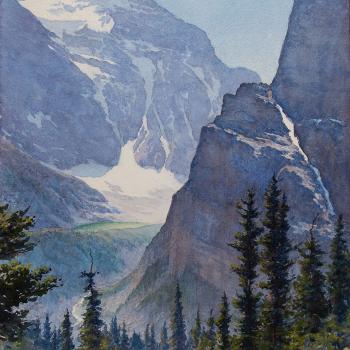
In the passages under consideration here, John the Baptist is very much aware of his role as the forerunner to somebody much “mightier” or “stronger” (ἰσχυρότερός) than he is.
My confidence in the four gospel accounts here is actually somewhat strengthened by the variation in their reporting of John’s remark involving Jesus’ shoes or, better, his sandals (literally, something “bound under”):
Matthew 3:11 has the Baptist saying that he is not worthy to carry the sandals of Jesus (οὗ οὐκ εἰμὶ ἱκανὸς τὰ ὑποδήματα βαστάσαι). By contrast, Mark 1:7, Luke 3:16, and even John 1:27 have him say that he isn’t worthy to untie (λῦσαι/λύσω) those sandals — with Mark also including the idea of “stooping down” to do so.
If they were all verbally identical, I would find that somewhat suspicious.
But, now, a word about standard practice involving threshing floors and winnowing forks, of which, as a modern city kid, I know very little from direct experience:
When sheaves of grain are brought in by the harvesters from out in the fields, they are opened up and the stalks are spread across the threshing floor. Next, pairs of donkeys or oxen (or, less commonly, of some other domesticated quadruped) are walked around and around on top of those stalks, in order to separate the ears of actual grain from them and to loosen the grain itself from its husks. Often, the animals drag a heavy “threshing board” behind them, which helps in the process.
After the threshing is done, the stalks and the grain are gathered. They’re thrown into the air with a wooden “winnowing fan” or “winnowing fork.” A wind or a good breeze then serves to blow the the unusable portion of the harvest — the lighter straw or so-called “chaff” — away. By contrast, the usable grain, which is heavier, falls much nearer to the feet of the person wielding the winnowing fan or fork. Thereafter, a sieve is used to purify the grain still further, in order to suit it for human use in baking and so forth.












